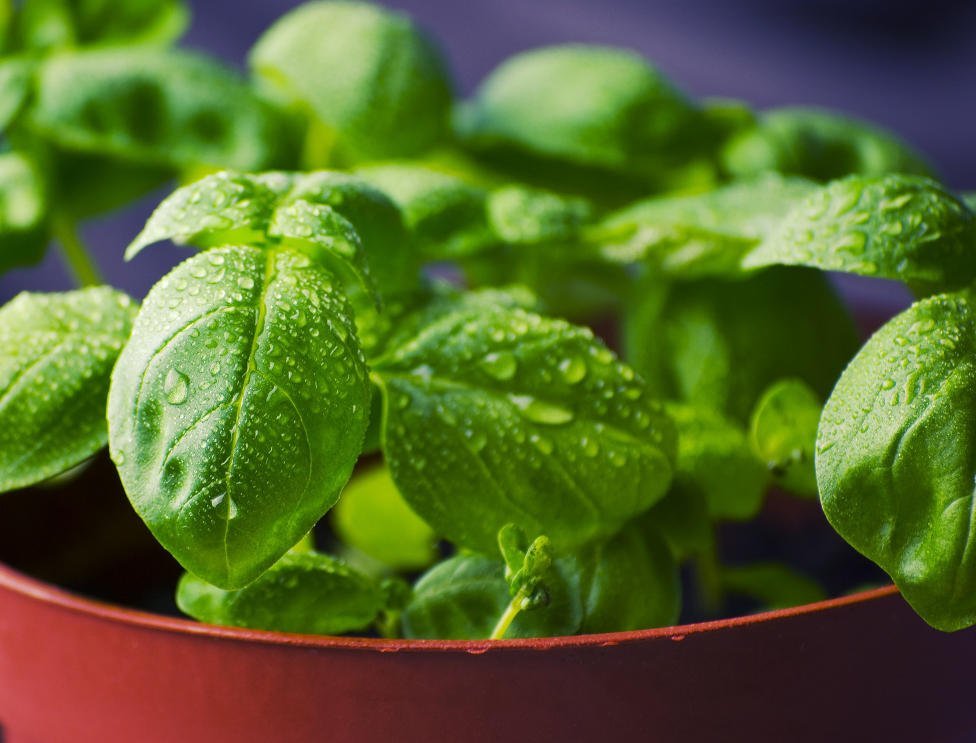Basil, with its aromatic leaves and versatile culinary uses, is a perfect herb to cultivate in a container garden. Whether you have a spacious backyard or a modest balcony, growing basil in a container is a rewarding endeavour that brings fresh flavours to your kitchen. In this friendly guide, we’ll explore the basic needs for cultivating basil, share effective growing techniques, troubleshoot common problems, discuss harvesting and storage tips, offer additional insights with handy tips, and conclude with the satisfaction of nurturing your vibrant basil.
Basic Needs: Creating the Perfect Haven for Your Herb
Container Selection and Size
Embark on your basil-growing journey by selecting a suitable container. Choose a pot that is at least 15-20 cm in diameter for each basil plant. Ensure the container has drainage holes to prevent waterlogging, which Basil dislikes. If you’re planting multiple basil plants, space them about 30-45 cm apart.
Soil and Fertilization
Provide basil with well-draining soil rich in organic matter. A high-quality potting mix works well. Fertilize your basil plants every 4-6 weeks with a balanced, all-purpose fertilizer. Basil is not particularly demanding when it comes to soil fertility, but a nutrient boost enhances its growth.
Sunlight Exposure
Basil thrives in sunlight, so choose a location that receives at least 6-8 hours of direct sunlight daily. If you’re growing basil indoors, place the container near a south-facing window to maximize sunlight exposure. Adequate sunlight not only supports robust growth but also enhances the flavour of the leaves.
Growing Techniques: Nurturing Basil from Seed to Abundant Harvest
Planting Basil Seeds or Seedlings
Decide whether you want to start basil from seeds or purchase seedlings. Sow seeds directly into the container or transplant seedlings from a nursery. Plant the seeds about 1 cm deep and space them according to the recommended distance on the seed packet. If transplanting seedlings, ensure they are planted at the same depth as they were in their nursery pots.
Watering Strategies
Basil prefers consistently moist soil but doesn’t tolerate waterlogged conditions. Water the plants at the base to keep the leaves dry and reduce the risk of fungal diseases. Check the soil moisture regularly and water when the top 3 cm feels dry. Adjust your watering frequency based on environmental conditions.
Pruning for Bushy Growth
Encourage bushy growth and prevent the basil from becoming leggy by regular pruning. Pinch off the tips of the stems when the plant has at least six leaves. This promotes lateral branching, resulting in a fuller and more compact basil plant. Pruning also helps maintain a continuous supply of fresh leaves.
Problem-Solving: Tackling Common Challenges
Pests and Diseases
While basil is generally resistant to pests, occasional invaders like aphids or spider mites may appear. Use insecticidal soap or neem oil for organic pest control. Ensure good air circulation around the plants to reduce the risk of fungal diseases.
Yellowing Leaves
Yellowing leaves could indicate overwatering, underwatering, or nutrient deficiencies. Adjust your watering schedule, ensure proper drainage, and consider fertilizing with a balanced fertilizer if necessary. Mulching around the plants helps retain soil moisture and prevents water evaporation.
Bolting and Flowering
Basil tends to bolt or produce flowers prematurely, especially in hot weather. To prevent bolting, harvest regularly and pinch off flower buds as soon as they appear. If bolting occurs, trim the plant back to encourage new growth and prevent further flowering.
Harvesting and Storage
Harvesting Techniques
Harvest basil leaves when the plant has developed at least six leaves. Use clean scissors or shears to cut the stems just above a set of leaves. Harvesting from the top encourages lateral branching and ensures a continuous supply of fresh leaves. Be mindful not to remove more than one-third of the plant at a time.
Drying and Freezing Basil
Preserve your basil harvest by drying or freezing the leaves. To dry, tie small bunches of stems together and hang them upside down in a dry, well-ventilated area. Once dried, store the leaves in an airtight container. Alternatively, freeze basil leaves by placing them in a single layer on a tray, and then transferring them to a freezer bag once frozen.
Tips: Enhancing Your Basil-Growing Experience
Companion Planting
Grow basil alongside tomatoes, peppers, or oregano. Basil acts as a natural pest repellent and enhances the flavour of neighbouring plants. This practice is not only functional but also promotes a balanced and diverse garden ecosystem.
Varieties of Basil
Experiment with different basil varieties, such as Genovese, Thai, or Lemon basil, to explore unique flavours and aromas. Each variety adds a distinct profile to your culinary creations.
Regrowing Basil from Cuttings
Extend your basil harvest by regrowing the herb from cuttings. Snip a healthy stem just below a leaf node, remove the lower leaves, and place the cutting in water. Once roots develop, transplant the cutting into the soil for a new basil plant.
A Bounty of Basil in Your Container Garden
Growing basil in a container is not just about cultivating an herb; it’s about elevating your culinary experiences with fresh and aromatic leaves. By understanding the basic needs, employing smart growing techniques, addressing challenges effectively, and incorporating tips for success, you’re on your way to enjoying a continuous supply of homegrown basil. Embrace the joy of nurturing your container garden, and let the rich aroma of freshly harvested basil enhance your culinary creations.
